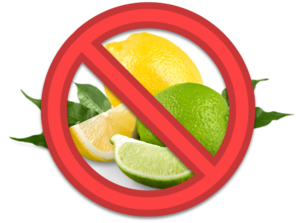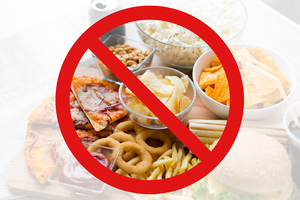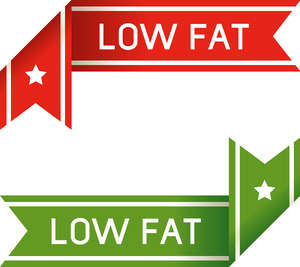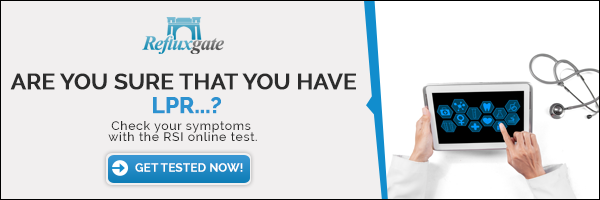Dr. Jamie Koufman is a, if not THE, pioneer in treating laryngopharyngeal reflux (LPR).
She has coined the term LPR as well as its synonyms: silent reflux, airway reflux & respiratory reflux.
Dr. Koufman’s authority goes back to the books that she published about LPR.
There are two versions of the book available.
The newest one is Dr. Koufman’s Acid Reflux Diet. It is an updated version of her older book Dropping Acid: The Reflux Diet Cookbook & Cure. I recommend the newer version as it includes updated information and brings things more to the point. Funnily, it is a bit cheaper than the old version.
What is Inside the Books?
Dr. Jamie Koufman’s books about LPR both start with an introduction into causes, diagnosis & treatment of the disease.
However, this part about the disease is very short. You can easily read them in an hour if you hurry through it.
Instead of giving extensive, in-depth information, Koufman brings the facts to the point.
A collection of recipes that fit Koufman’s diet makes up the bulk of the books.
What You are Allowed to Eat
Jamie Koufman’s diet advice against silent reflux is a combination of factors. Her diet starts with a very strict 2-week detox program which only allows foods that cause the least reflux.
After those two weeks, you can reintroduce some foods and test out what you can tolerate.
Low Acidity
This is a unique factor. It differentiates the diet from others and explains the name of the first book: Dropping Acid.
Dr. Koufman’s diet forbids everything below pH 5. The pH is a way to measure acidity. All sodas, most canned foods, and fruits are below pH 5. Some other foods like yogurt are acidic as well.

Once your symptoms are better, you can try to reintroduce foods down to pH 4. That allows you a more diversified diet.
Low Fat
Another core component of Dr. Jamie Koufman’s diet is low-fat food.

The explanation is simple: fat relaxes the lower esophageal sphincter (LES). The LES is the valve which sits above the stomach. Fat causes that valve to be looser. That is why fat promotes reflux.
You will be able to reintroduce moderate amounts of fat back into your diet after a while.
Low-fat diets might introduce a host of new problems in the long-term. However, strongly cutting back on fats for a while gives your body a break from reflux and time to heal.

Avoiding Reflux Triggers
There are foods which are known causes of reflux.
Typical examples are garlic and onions. Others are coffee, tea, and chocolate.
Some of those trigger foods produce gas in the stomach. The resulting pressure forces the sphincter up above the stomach. Other foods simply relax the sphincter so that anything opens it easier.
People’s reactions to trigger foods vary. One patient might not tolerate the smallest amounts of chocolate while the next does not feel a bit of reflux.
The goal is to avoid all those trigger foods until symptoms improve. Then you can reintroduce them into your diet one after the other. That allows you to check which ones you can tolerate in which amounts.
What is Great About the Books
With her books, Dr. Koufman, who also founded the Voice Institute of New York, has developed the most widely accepted diet against LPR.
In her newest book, Dr. Koufman’s Acid Reflux Diet, she brings the causes and her proposed treatment straight to the point. If you are somebody who just wants the basic information and to start with treatment – this book is the perfect fit for you.
Koufman’s books have brought the topic of silent reflux into the public eye. Without Dr. Jamie Koufman, LPR patients would find it WAY more difficult to find treatment.
What is very good about the Dropping Acid Diet books is that they include a huge number of recipes. So even if you say: I do not care about what LPR is or how it is caused – you can just follow the recipes, at least for the first few weeks, and see whether it works for you. Sooner or later you will want to eat something else, so you still need to understand the basics of what causes reflux. You can always dive deeper into the topic then.
Things I Missed
The big upside of the books – that they are straight to the point – is also the downside.
I believe that having all the information is the best foundation for fixing a problem. Dr. Koufman’s books give you a summary of causes and treatment of LPR, but that’s it.
I know that many of my readers on Refluxgate are the severe LPR cases. Most get better with Koufman’s diet, but many do not.
Those types of patients need advanced strategies. What helps them is to get a deep understanding of LPR. It enables them to experiment with different diet and treatment approaches. You will not get that in the Dropping Acid books.
Koufman also does not go much into what happens after the 2-week induction diet. She only writes that you have to test which foods you can tolerate and which ones you cannot.
There is a competing diet approach to Koufman’s diet out there: the Fast Tract Diet.
Many of my readers are confused about which of those two diets they should follow. The diets conflict with each other in some ways.
The Fast Tract Diet sees bacteria in the gut as the cause of reflux. Those bacteria produce gas from fermentable carbohydrates. Jamie Koufman’s Dropping Acid Diet includes many fermentable carbohydrates like whole wheat bread, pasta, rice & potatoes.
Maybe Dr. Koufman even agrees that the Fast Tract Diet approach could work well in some people? But her approach works more often? You won’t be able to tell from the information in the book.
Is it Scientifically Proven?
The short answer is: the diet as a whole is not scientifically proven.
However, its individual elements have a scientific basis. That means theoretically it should work.

Jamie Koufman had to fight an uphill battle in bringing her knowledge to patients. Before the internet, it was very tough for physicians to introduce new concepts and treatments into the medical world.
It is a universal phenomenon that the establishment tends to block and slow change by new and innovative thinkers.
Do not get me wrong, having a critical establishment is important. There are more fake treatments, hoaxes, modern snake oils and placebos on the market than working therapies.
That is why the medical establishment demands hard data to prove that a treatment concept works.
How you get that data?
Through independent studies from neutral parties.
But guess what:
Those studies are incredibly expensive.
Usually, studies are sponsored by pharmaceutical companies who have an interest to show that their drugs are effective.
Getting a neutral party to do a study and providing the necessary funds for a dietary treatment approach is close to impossible. There are no parties with a monetary interest in the diet and deep enough pockets involved. You cannot put a patent on a diet or specific foods.
That explains why there is little scientific proof for the effectiveness of the Koufman diet.
It is also why Dr. Koufman is often praised but can easily be attacked for the lack of scientifically proven results.
The Chronic Cough Enigma & Neuropathy
This article would not be complete without mentioning that Dr. Koufman has written a whole book about chronic cough called The Chronic Cough Enigma.
Many cases of chronic cough are caused by a damaged nerve. The medical term is neuropathy. I published an interview about this topic.
Reflux and Neuropathy are Easily Mixed Up
You might ask: why should I care about nerve damage? I want to know how to treat my reflux!
But are you sure that it is reflux that is causing your symptoms? Especially since chronic cough can be caused both by reflux and neuropathy.
Many people are writing to me that they do not manage to get better with reflux treatment. When I ask them to describe their symptoms, they sometimes sound much more like neuropathy than reflux.
Chronic cough is the most common symptom of neuropathy in the throat area. However, tingling, burning, general pain or painful speaking are other signs. Those symptoms can show up in the larynx or pharynx. Even the mouth can be hit. In that case, it is usually a burning feeling which explains the medical term: burning mouth syndrome (BMS).
Both Diseases Can Show Up Simultaneously
Usually coughing should only happen when something threatens to block the airways. Like slime which is produced as a reaction to reflux.
The neuropathy causes nerves to become more sensitive. They start triggering an unnecessary coughing reflux from the slightest stimulation.
Some people have reflux and neuropathy.
In those cases, even slight reflux can feel very bad. The damaged nerve multiplies how strong the symptoms are perceived.
How the Chronic Cough Enigma Can Help
But to come back to Dr. Koufman’s book, I loved the detail of the Chronic Cough Enigma. It explains very well how chronic cough can be caused by damaged nerves.
The downside is that Koufman concentrates on only one symptom: chronic cough. She mentions other symptoms of neuropathy like a sore & burning throat or painful speaking only as side notes. However, causes and treatment of all of those symptoms are very similar.
If you think you might have both neuropathy and reflux: you will still need to treat the reflux. That is very important, as the nerve damage will multiply the reflux symptoms. Also, the reflux might even increase the nerve damage by irritation through chronic inflammation.
Let’s Sum Up
There are two books by Dr. Koufman about the LPR diet. The new version is Dr. Koufman’s Acid Reflux Diet.
The books focus is on diet. Some people will need additional treatment which you will not find much about in these books. Check out my extensive guide on LPR treatment to learn more.
Are you unsure whether your symptoms stem from reflux?
I offer a free online test that calculates your reflux symptom score (RSI). The RSI is a very good first indicator for whether you have LPR or not.


